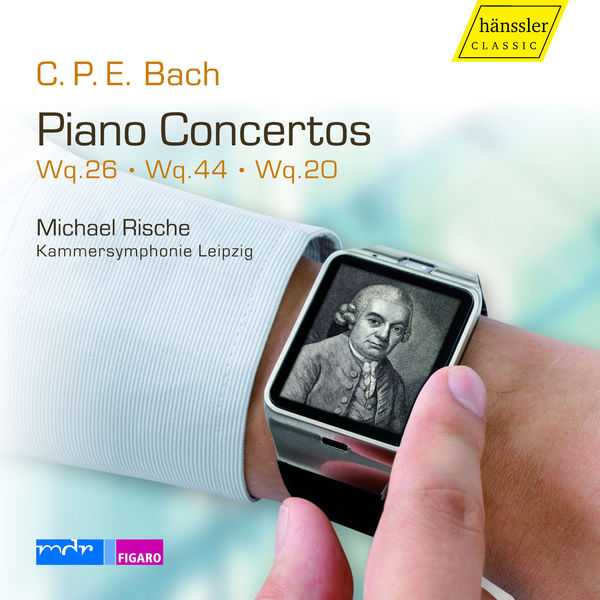
Composer: Carl Philipp Emanuel Bach
Performer: Michael Rische
Orchestra: Kammersymphonie Leipzig
Format: FLAC (tracks)
Label: Hänssler
Catalogue: HC15046
Release: 2016
Size: 216 MB
Recovery: +3%
Scan: yes
Keyboard Concerto in A Minor, Wq. 26
01. I. Allegro assai
02. II. Andante
03. III. Allegro assai
Keyboard Concerto in G Major, Wq. 44
04. I. Allegretto
05. II. Andantino
06. III. Allegro
Keyboard Concerto in C Major, Wq. 20
07. I. Allegretto
08. II. Adagio ma non troppo
09. III. Allegretto assai
This is the fourth in a series of recordings of Carl Philipp Emanuel Bach’s keyboard concertos, which number 50 in total, by pianist Michael Rische. The albums are framed as pieces of advocacy for the music on Rische’s part; he is the author of the highly literate notes, which in this case contain intriguing facts such as C.P.E.’s presence on the first list of subscribers (this system was the Kickstarter of its day) for Kant’s Critique of Pure Reason. The use of a modern piano may seem odd for pieces written in 1746 and 1750, the dates of the C major and A minor concertos here, and Rische does not attempt to argue the point. But the piano works in this music, probably because all of it is so strikingly ahead of its time: even the two earlier concertos are a dense, rather playful type of motivic development that not only lets you see what Mozart was talking about when he said that anybody who understood his music well could hear C.P.E. in it, but even looks forward to Beethoven. Sample the tightly knit finale of the A minor concerto (track 3) for a general idea of what Rische is up to here. The middle, later Piano Concerto in G major, Wq 44, of 1776 is actually more retrospective in style, a compact homage to the galant music of C.P.E.’s younger brother, Johann Christian Bach. None of these concertos, not even the one in A minor, reflect the so-called empfindsamer Stil of the composer’s symphonies, but in Rische’s playing they capture his individualistic, idiosyncratic personality to the hilt. The Kammersymphonie Leipzig provides unobtrusive support in a recording that is not only illuminating but in many places a great deal of fun. Hänssler’s engineering, at an unidentified location, is superb.



